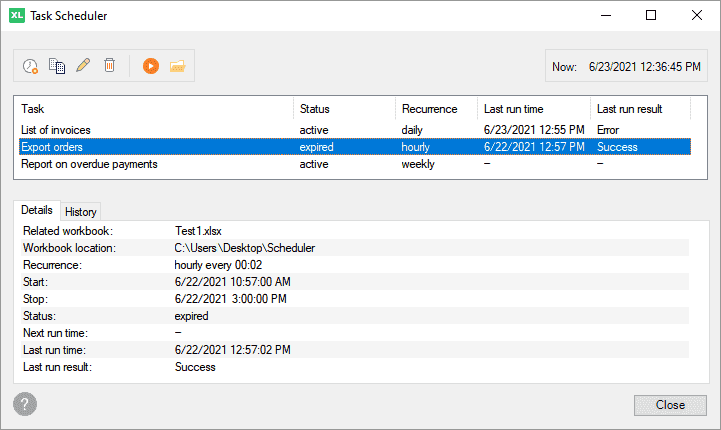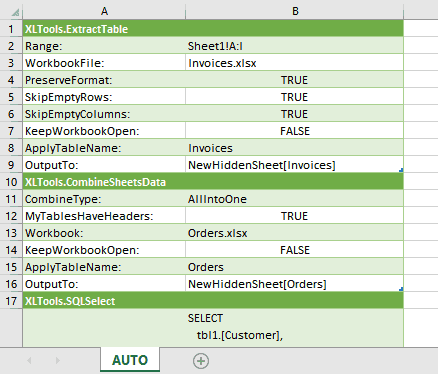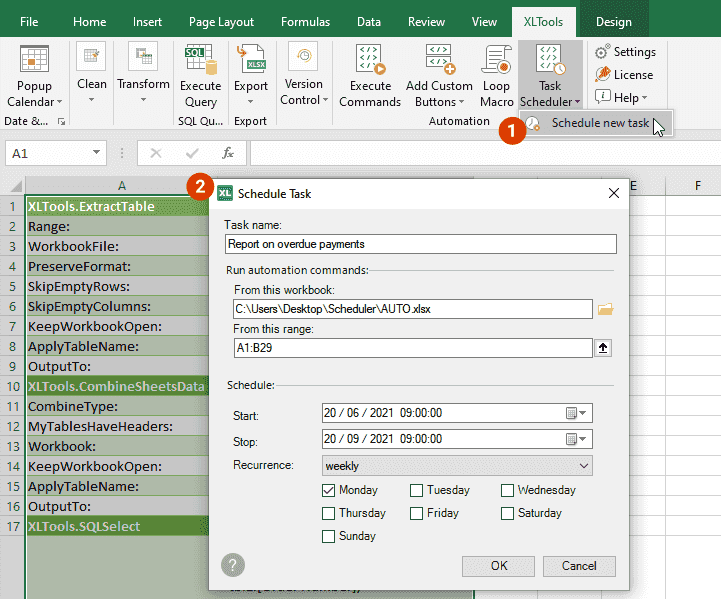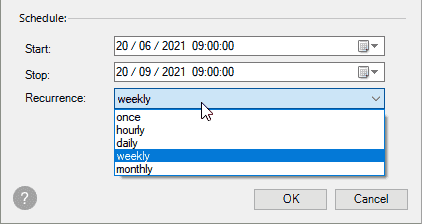This is a new feature and we can’t wait to hear your feedback. Just let us know. Use with caution: beta features may contain some bugs and rough edges. To test the feature, start a free trial or update to the latest XLTools version.
Run scheduled tasks in Excel at a specific time and at set intervals
Sometimes you may need to run scheduled tasks in Excel, for example, update a workbook every few hours, or generate a report every Monday morning. You might have even tried to create a recurring macro, or trigger a macro via Windows Scheduler. If you did, you know it can be quite tricky.
XLTools Task Scheduler makes time triggered automation easier. How it works:
- First, automate your tasks using the automation tool. Flexible commands help automate routine tasks in Excel without VBA.
- Next, set up a recurring schedule to trigger your automated tasks: every few hours, days, weeks, or other intervals.
Before you begin, add the Task Scheduler tool to Excel
Task Scheduler is one of the 20+ features within XLTools Add-in for Excel. Works in Excel 2019, 2016, 2013, 2010, desktop Office 365.

How to manage scheduled tasks in the Task Scheduler for Excel
You can always review the list of all scheduled tasks in XLTools Task Scheduler, edit, delete or create new ones.
- Open any Excel workbook
Open XLTools tab
In the Automation group, click Task Scheduler
A window will open.
![XLTools Task Scheduler for Excel: overview]()
Review the menu:
- Schedule new task, see how
- Copy selected task
- Edit selected task: use this button, or double click on the task
- Delete selected task(s)
- Run selected task now: triggers the selected task to run immediately
- Open folder of related workbook: open the workbook, which holds the automation commands for this task
Review the list of scheduled tasks and summary:
- Status: active or expired, in queue or running
- Recurrence: briefly
- Last run time
- Last run result
Select any task in the list and see the Details tab:
- Related workbook and its location
- Recurrence: detailed
- Start and stop time
- Status: active or expired, in queue or running
- Next run time
- Last run time
- Last run result
Select any task in the list and review the History tab:
- All previous run times
- Complete run results: success or error details
How to schedule a task in Excel [example]
The Task Scheduler allows scheduling tasks in Excel so that they run automatically at a specific time and on any recurring schedule: every few hours, days, weeks, months, etc.
Start Excel as administrator.
Open a workbook with your automation commands. For example, here is the automated workflow that prepares the list of overdue payments and exports it to CSV format.
![Open a workbook with automation commands to schedule a task]()
- On XLTools tab, click the drop-down at the Task Scheduler button
Click Schedule new task
A window will open.
![Create a new task and set up a recurring schedule]()
Name the task, for example, “Report on overdue payments”.
See that the field “From this workbook” is filled automatically with the location of this workbook.
Select the range of the automation commands: A1:B29.
Specify the recurring schedule:
- Start: the task will be triggered to run on June 20, at 9 AM
- Stop: the task will expire and will no longer run after September 20, 9 AM
- Recurrence: choose weekly, an check every Monday
![Specify start and stop time and recurrence]()
- Click OK
Done, the task is scheduled
It will appear in the list of all tasks
When the scheduled time comes, the task will run automatically.



